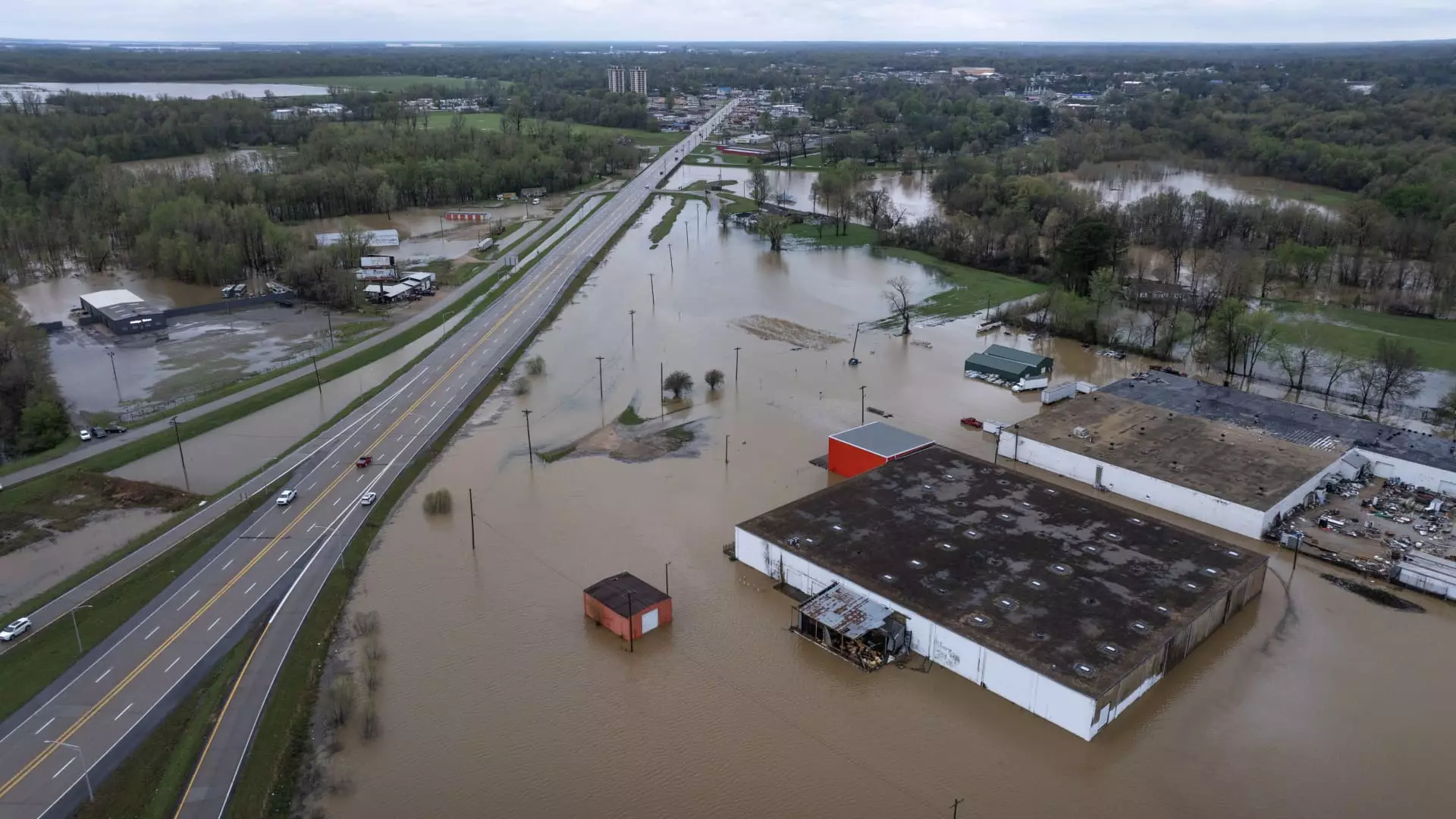As we grapple with the relentless march of climate change, the recent calamities underscored by the catastrophic storms wreaking havoc in the Northeast echo a chilling warning. The loss of at least 21 lives underscores not just the immediate devastation of these intense weather patterns, but also the inescapable reality of a world reeling from the impacts of an increasingly volatile climate. Last week’s assault by torrential rains, which resulted in catastrophic flooding, is a stark reminder that our natural environment can also be an unforgiving adversary. This reality should galvanize action, as we cannot afford to allow another tragedy to evaporate into inaction.
The heartbreaking toll spans states littered with grief. Arkansas, Kentucky, Georgia, Indiana, Missouri, Tennessee, and Mississippi have all seen the brutality of Mother Nature this spring. Amid these losses, the sheer scale of chaos—from rising river levels to lives turned upside down—demands urgent attention. Local responders, who have taken emergency measures such as rescuing individuals stranded in rising waters, confront the reality that their communities are forever altered. Mandatory evacuations and state records for rainfall showcase how unprecedented this catastrophe is; the once-innocuous weather patterns of our past appear increasingly anachronistic in the face of dynamic climate shifts.
More Than Just Numbers
While numbers may numb, the real consequences of these tragedies unfold through personal stories—individual tragedies that paint a broader picture. The words of Chad Womack, assistant chief of the Anderson County Fire Department, is a bitter reminder of how nature can undo years of hard work and stability in mere hours. When he says locals “have lost everything they’ve had,” it serves as a chilling encapsulation of the true human cost amid statistical data. The emotional and material toll of these storms transcends imagination, rupturing families and communities that require nothing less than a formidable collective response.
Moreover, with 93 preliminary tornadoes reported, there is a growing concern that such extreme weather events are not merely anomalies but harbingers of a new normal. The idea that storms might repeatedly strike in such concentrated bursts is alarming; it exemplifies the need for comprehensive disaster response planning as well as proactive climate policies that embrace sustainability.
The Interplay of Nature and Forecast
Experts predict that the catastrophe is not yet over; ongoing flood threats loom ominously over already scarred communities. Various river systems across the Southeast, including the Arkansas, Mississippi, Tennessee, and Ohio Rivers, are dangerously close to surpassing flood stages, aggravating an already dire situation. The forecast predicts more rain, extending the challenges faced by already strained response systems. The National Weather Service’s warnings highlight the need for trees to be saved—not just in our backyards, but as crucial elements sustaining our earth’s delicate balance.
Yet, juxtaposed against this is the simultaneous threat of snow in the Northeast, illustrating how erratic weather patterns complicate recovery efforts. The dichotomy of experiencing floods while snowy storms loom in the horizon not only perplexes us, but also burdens those in affected regions with deeper layers of anxiety.
Unraveling the Response
With the Government tasked with significant responsibility in ensuring community preparedness, the questions loom: Are we ready for the onslaught of such severe weather? Do our politicians understand the implications of climate change? The stagnant response from political leaders, often shackled by corporate interests and denialism, compromises our adaptability to changing climate circumstances.
More proactive measures must be embraced to facilitate recovery and resilience in impacted communities. This includes investing in infrastructure capable of withstanding extreme weather, alarm systems to warn citizens of imminent danger, and comprehensive climate education. Our leaders must not only acknowledge climate change, but also act decisively—turning rhetoric into a robust framework of action. If we are to prevent future tragedies, we must reshape our stories from loss into proactive solutions.
In navigating these turbulent waters, it is crucial that we understand our shortcomings not merely as failures, but as a powerful impetus to forge a future of resilience and adaptation. The floods may recede, but the call for a transformative response to climate reality must remain ever present in our discourse.

